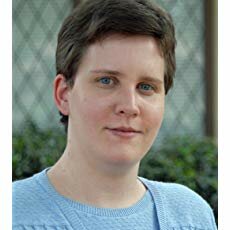I was in an online debate on artificial intelligence when Robert Arvanitis brought up something he’d written referencing Lord of the Rings. From the title “The Orcs that ran away”, I thought it was a short fantasy story. In reality, it was a financial paper on the economic impact of the production of the Lord of the Rings movies in New Zealand and how AI was used to solve it.
Tamara Wilhite: In our prior conversation, you said that when filming “Two Towers”, there weren’t enough people in New Zealand for all the extras. This is why the movie producers used artificial intelligence to populate the Orcs attacking Helm’s Deep. How did you end up writing the paper on this subject?
Robert Arvanitis: A few years ago, I wrote a series of white papers for a major software firm. Their clients were financial institutions, seeking to develop new offerings by better understanding their own users. The “Orcs” paper was a cautionary tale on limitations of AI in such undertakings.
Tamara Wilhite: Why were “amazingly few lines of code” needed to replicate Orc behavior?
Robert Arvanitis: Quite often, when we think we’ve found a new approach to IT questions, we learn Mother Nature has gotten there ahead of us. And Mother Nature is most economical[1]. In this case, it was a simple weighing of neighbors to determine paths.
Whether ants in the yard or Orcs on screen, actions are taken from a limited range of options. With the Orcs, when there were too many “enemies” ahead, and not enough “friends” behind, Orcs moved into the empty spaces, ran away. So programmers had to detune the behavior, and make Orcs charge the good guys, to their doom.
Tamara Wilhite: What issues with the computer modeling led you to call them “The Orcs that ran away”?
Robert Arvanitis: The occasion was fairly complex pricing methods of financial institutions. This included both price sensitivity of customers, and their own cost functions, including dynamic capital allocation. Hard to unravel the net effects of offsetting factors. Eventually found the core issue was matching competitive prices. Discretion precludes names, but several institutions learned the folly of “market share” as a compensation metric.
Tamara Wilhite: You have a degree in physics and one in actuarial science. What do you do for a living?
Robert Arvanitis: I work with corporations on recognizing and responding to unexpected correlations.
Too many folks see the immediate effects of any given event. But dominoes tumbling further down the line are too uncertain to bet on. Thus the best opportunities are with second or third order implications of changes in the world. This rule is especially effective in identifying new markets, and encourages an appropriate modesty in pursuit.
A specific case on defense: A chemical plant had three (physically) independent safety mechanisms. But the same understaffed, overworked teams maintained all three. With that common element, correlations converged, almost disastrously.
Tamara Wilhite: What else have you written?
Robert Arvanitis: A monograph on the future of investment banking, and a piece on convergence of risks; physical, engineering, and financial; among others.
Tamara Wilhite: May I ask what you do for fun?
Robert Arvanitis: Actuary – you’re kidding, right?
Tamara Wilhite: Is there anything you’d like to add?
Robert Arvanitis: Creating value is not about software or computational power. It’s about making that shift in perspective, thinking broadly enough, to find the unexpected.
Tamara Wilhite: Thank you for speaking with me.
*****
References:
[1] https://en.wikipedia.org/wiki/Ant_colony_optimization_algorithms
https://medium.com/10x-curiosity/complex-adaptive-systems-simple-rules-unpredictable-outcomes-e85d2f5230a5
The software behind Lord of the Rings’ giant battles now has a playable demo – Kill Screen
Photo by tunechick83 (Pixabay)



Comments
Leave a Reply